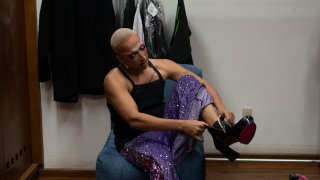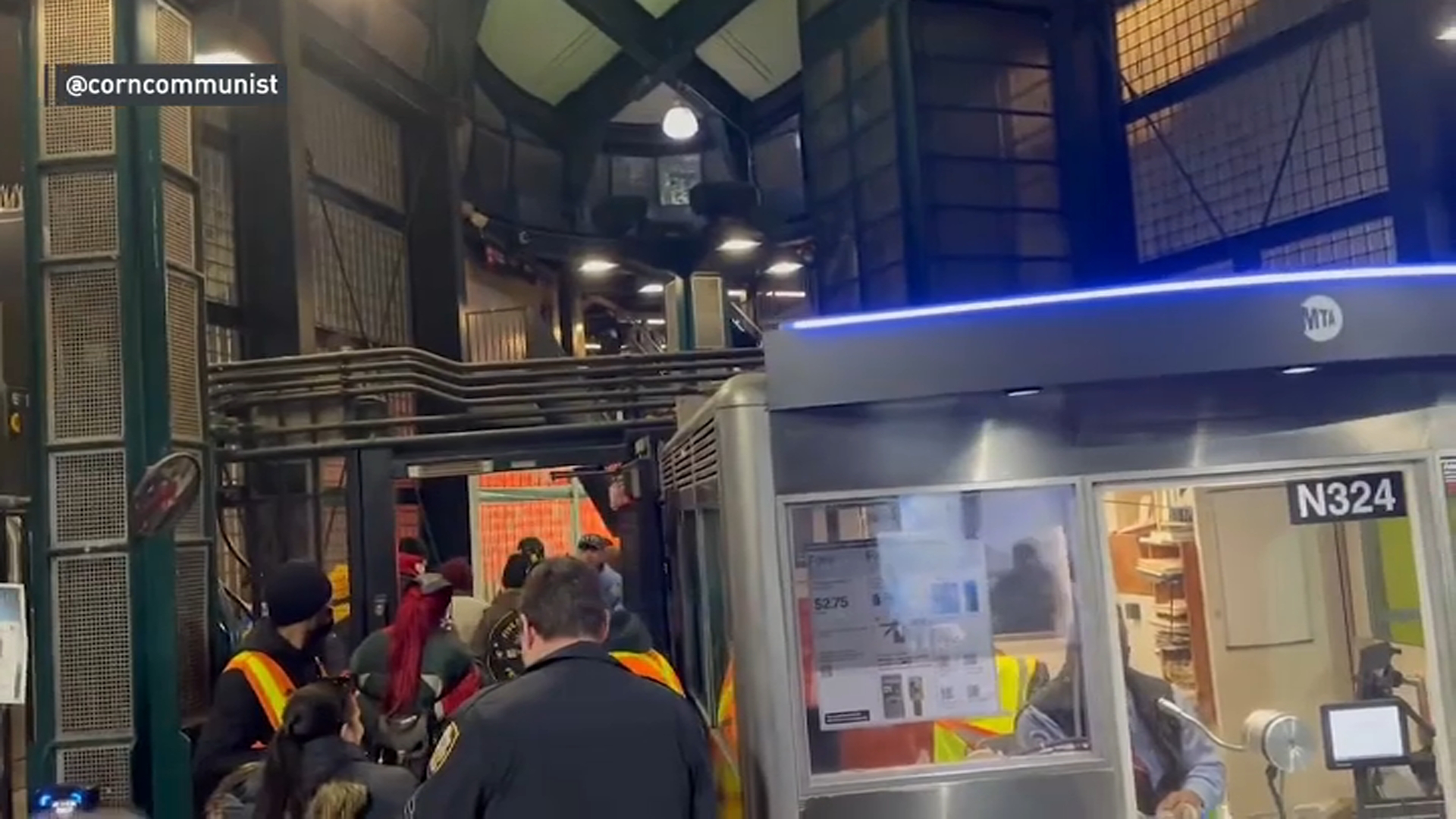
Guillermo Barraza buzzes with a nervous energy as he watches himself transform.
Hands delicately paint stripes of bright pink eyeshadow onto Barraza’s angular face as newscasters and makeup artists bustle around him. He shrugs on a purple sequined blazer like a layer of sparkle-studded armor.
Watch NBC6 free wherever you are
Tonight, in a small studio set in the heart of Mexico City, Barraza is making history.
Through his drag character Amanda, the 32-year-old journalist is the first-ever drag queen to host a news program for Mexican TV.
Get local news you need to know to start your day with NBC 6's News Headlines newsletter.
By stepping out under the glow of the studio lights, Barraza has sought to push the boundaries of society in a place where both LGBTQ+ people and journalists are violently targeted. And he's doing it at a moment when the issue has roared back into the public discourse with the violent death of one of the very guests on his program – one of the most prominent queer figures in the country.
“Having an alter ego, you have fewer problems because they can’t harass a character. You have more freedom to speak out,” he said. “There are many things that Guillermo wouldn’t do or say that Amanda wouldn’t think twice about.”
From its inception in October, the program “La Verdrag” was meant to radically transform the way LGBTQ+ communities are viewed in Mexico’s highly “macho” society. It first came to fruition when Barraza took the helm of the newscast of public TV station Canal Once during Mexico’s Pride celebration in June dressed in drag.
The crush of hate comments that followed first scared Barraza but it soon pushed him and the TV station to create a show to make a space to discuss LGBTQ+ issues.
“This just years ago, would be completely unthinkable, talking about transsexuality, gender, drag,” said Vianey Fernández, a news director at Canal Once.
Growing up gay in the conservative northern city of Culiacán, Sinaloa, Barraza never saw gay characters he identified with on a deeper level staring back at him from the screen of his family’s clunky television.
“In Sinaloa, they teach you not to be gay.” Barraza said. “Historically, we were always ridiculed, an object of entertainment.”
In other countries, with the rise of shows like “RuPaul’s Drag Race,” drag has gradually mixed with mainstream culture. But drag has long been used as a tool or resistance when the LGBTQ+ community is “under attack”, explained Michael Moncrieff, a University of Geneva researcher.
“These are the fighters of their community,” Moncrieff said. “Drag queens were willing to do the things that no one else wanted to do.”
Barraza opens his program wrapped in a puffy blue-and-purple ball gown. “Welcome to La Verdrag, the program where minorities turn into a majority,” he says.
Running 40 minutes, the show cycles through the day’s biggest headlines and then pivots to deeply reported stories and interviews, pulling back different layers of the world of queerness in Mexico.
One week, it’s a deep dive on transgender youth, the next it’s an interview with Ociel Baena, the first openly nonbinary person in Latin America to hold a judicial position, one of most recognizable LGBTQ+ figures in the country.
“This hate speech against me continues to grow and grow. What’s most regrettable are the death threats I’ve been receiving recently,” Baena said donning a blazer, silver pumps and a white skirt. “They’re ingredients that create a breeding ground for homicides.”
It would be the last TV interview the magistrate would ever give.
Baena was found dead next to their partner in their home in the conservative Mexican state of Aguascalientes. What appeared to be nearly two dozen razor cuts slashed across their body, haunting Barraza and many queer people in Mexico.
Surrounded by friends in his Mexico City apartment after watching the first broadcast of “La Verdrag,” Barraza flicks through rows of hate comments flooding Canal Once’s social media.
He roars with laughter as he reads them out, but behind it is a blanket of fear.
In addition to being one of the world's deadliest places to practice journalism, Mexico has some of the highest rates of violence against LGBTQ+ communities in Latin America.
“I wouldn’t be the first journalist to be killed and I wouldn’t be the last,” he said. “My biggest fear is that what I’m doing is going to hurt other people, my partner, my mom, my brother.”
Over the past six years, the rights group Letra S has documented at least 513 targeted killings of LGBTQ+ people in Mexico. Cases have only risen in the past year and are often marked by extreme levels of violence.
“They don’t just try to put an end to the victim, but rather send a message to the entire population," said Jair Martínez, a researcher with Letra S.
Barraza peers down at a sea of thousands of mourners carrying candles and Pride flags in mid-November, a somberness painted on his normally animated face.
Speckling nearly every surface are photos of the nonbinary magistrate Baena, found dead earlier that day.
Hours after Baena’s body was found, local prosecutors quickly described the death as a murder-suicide. But the theory was quickly rejected by other officials and Mexico’s LGBTQ+ community.
The deaths sent shockwaves through Mexico’s gay community that once looked to Baena as a vocal leader in their fight for visibility. Chants of “justice, justice!” floated over Barraza, whose mind cycled through the hate comments popping up on La Verdrag’s social media.
“They’re both sick in the head,” read one. “Divine justice.”
“One week drunk celebrating their killing, the world is a better place,” another would read.
He sees flashes of Baena smiling and laughing next to him behind the cameras of his studio.
As Barraza marches alongside thousands of others winding through Mexico City’s main artery, tears begin to stream down his face. His partner, Francisco, wraps his arms around Barraza and they step forward hand-in-hand.
“In this country, no one is safe,” Barraza said. “The more visible you are, the more you want to fight for change, the more you put a target on your own chest. And if we have to put our lives on the line, that’s what we’ll do, because we won’t let fear win.”



